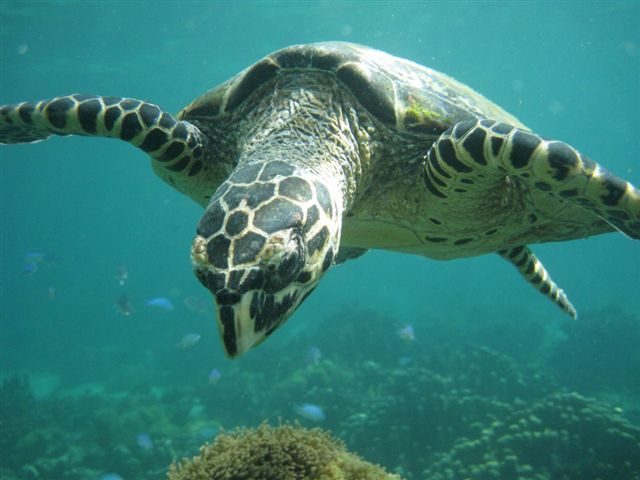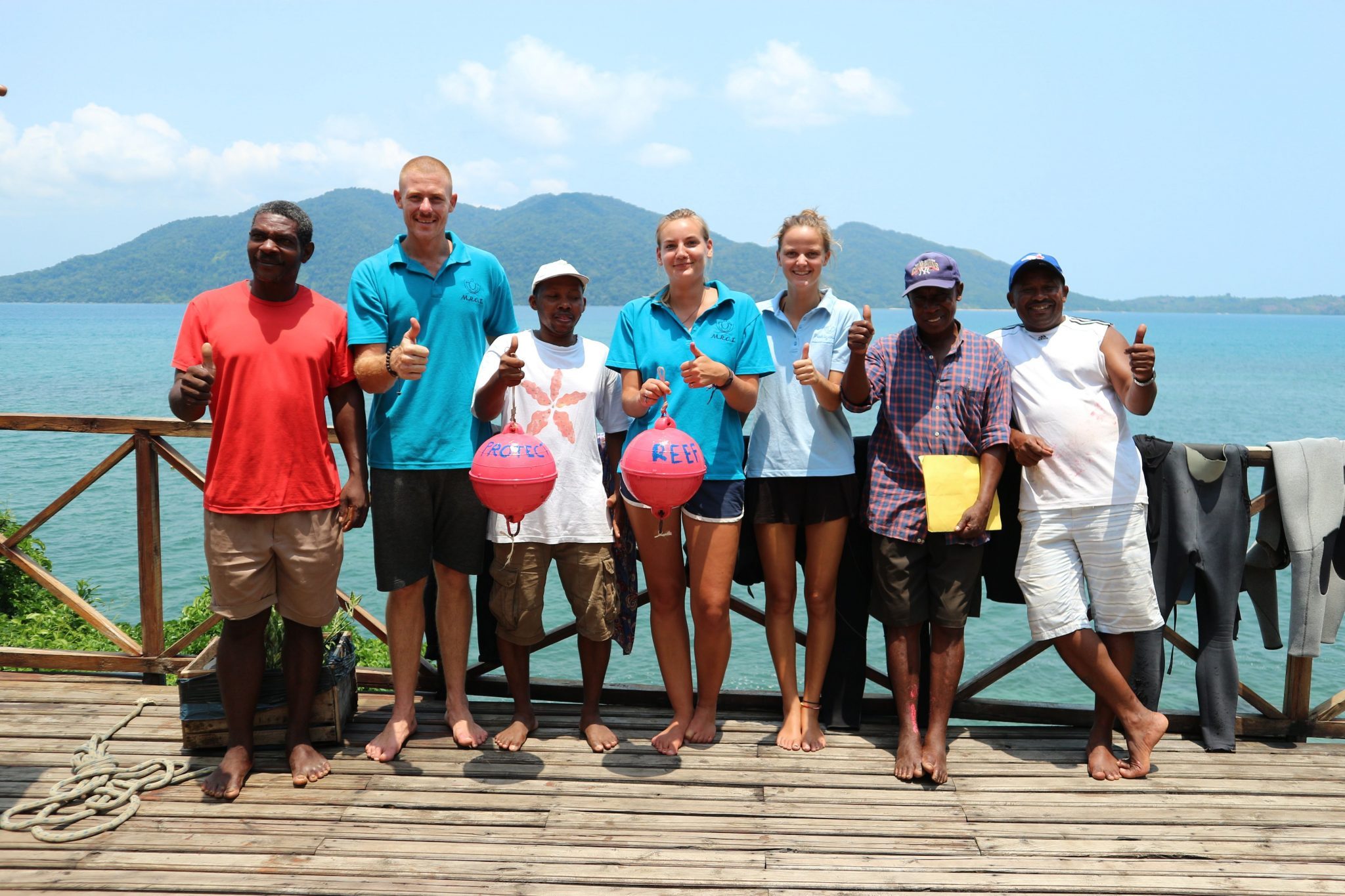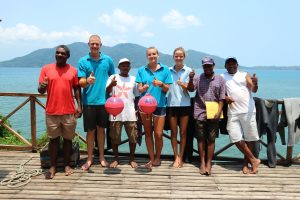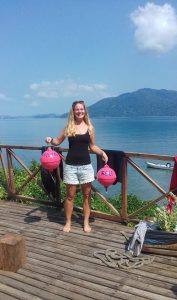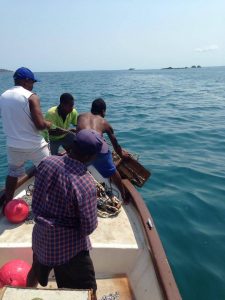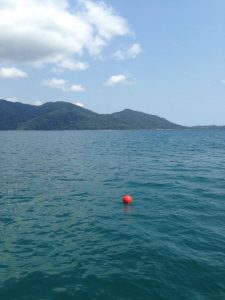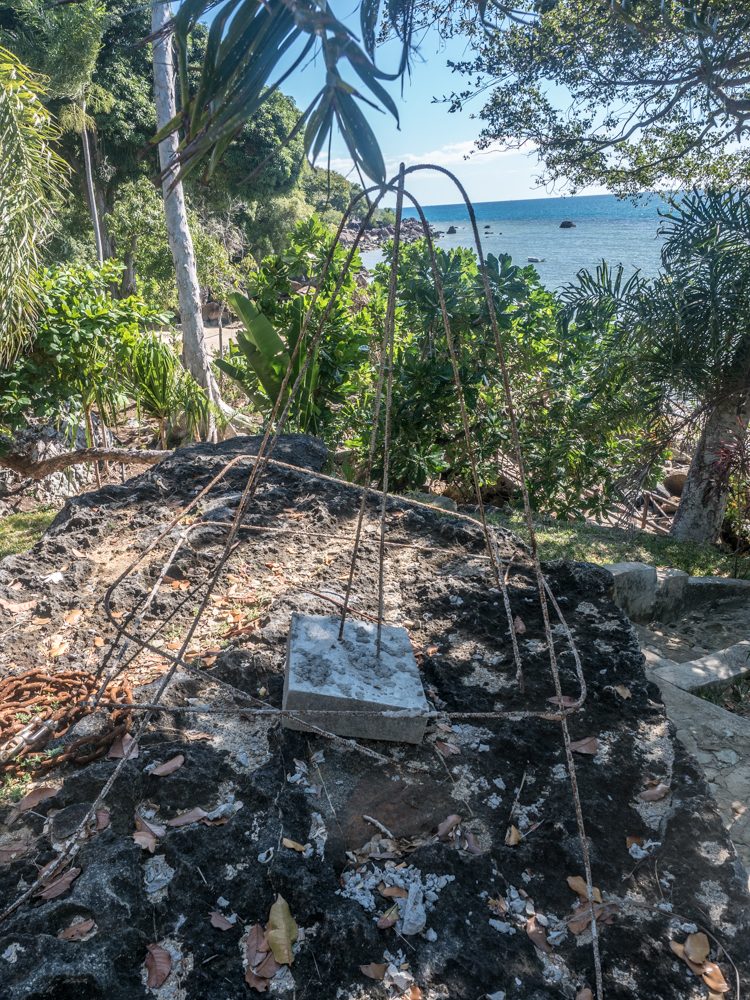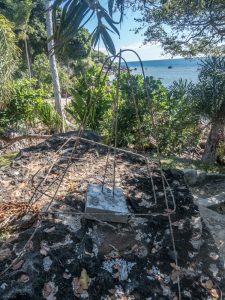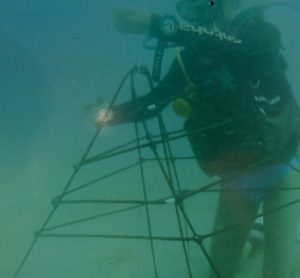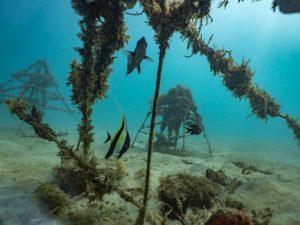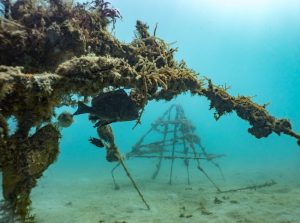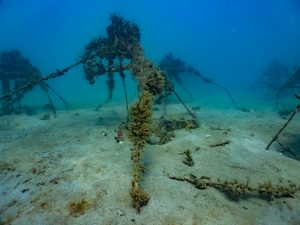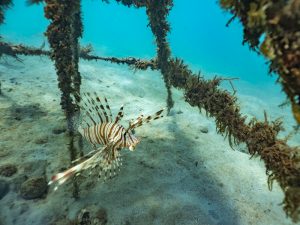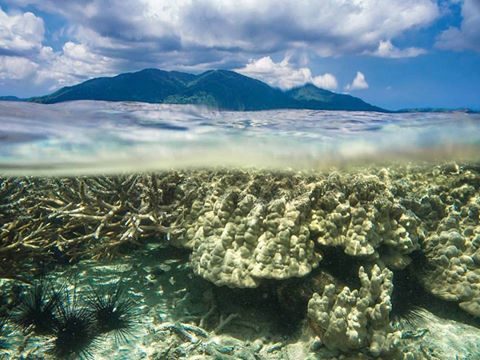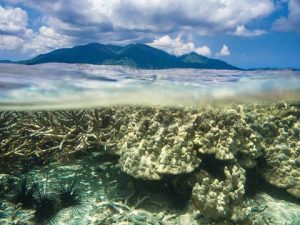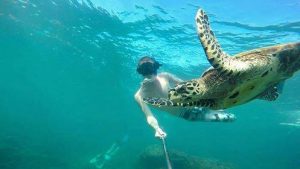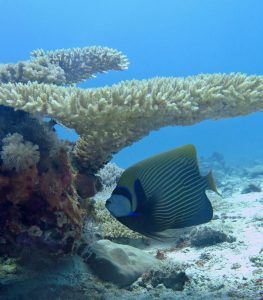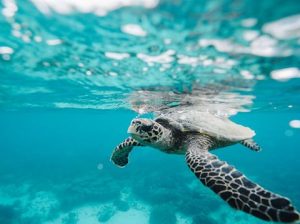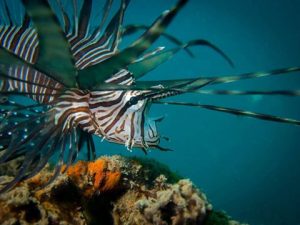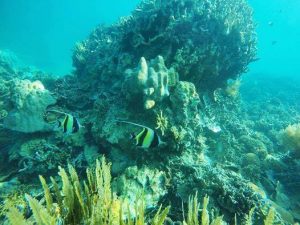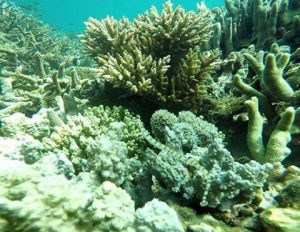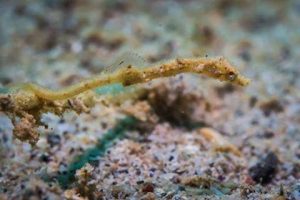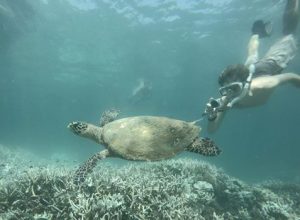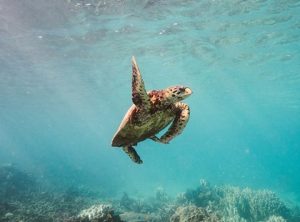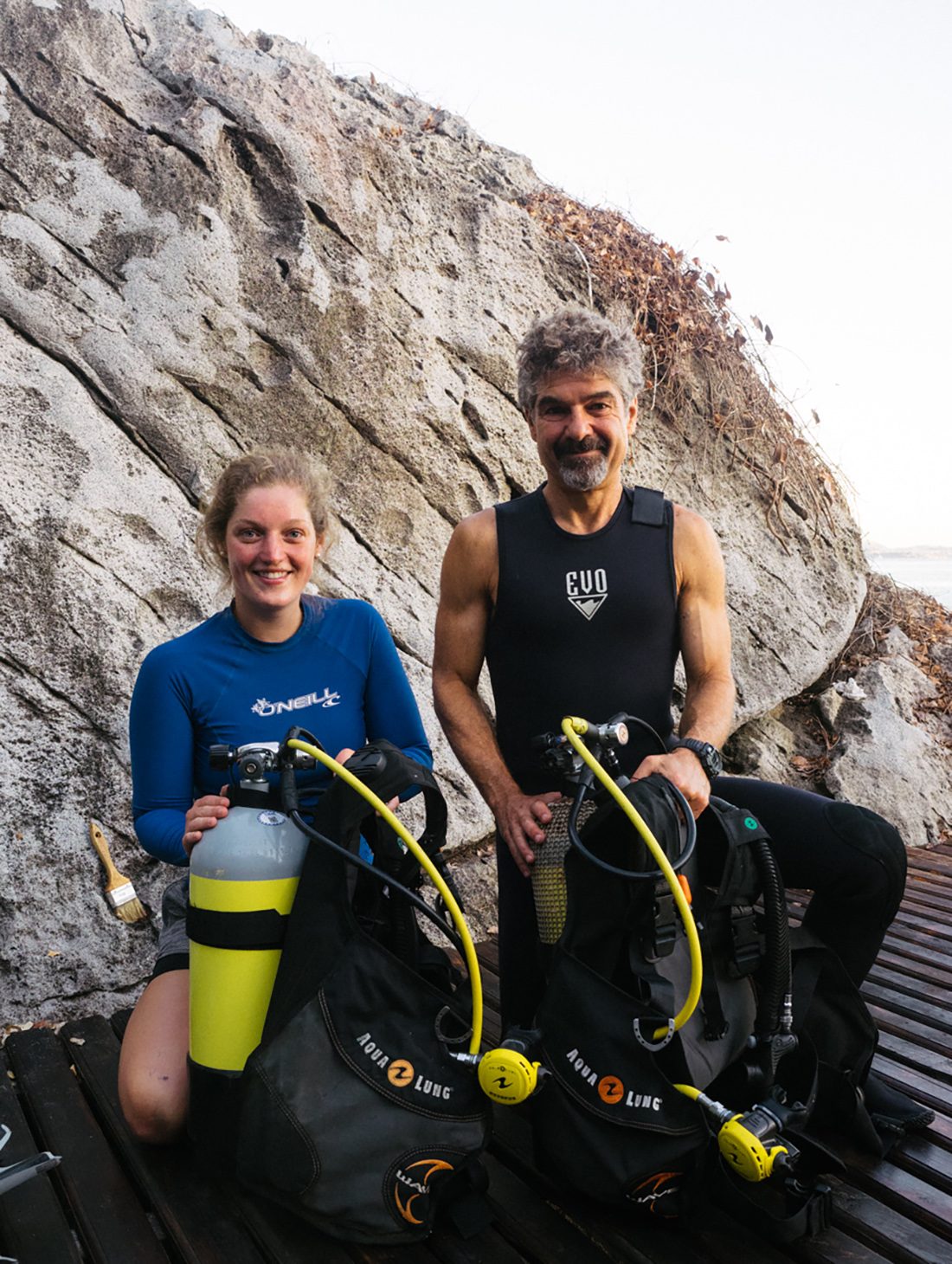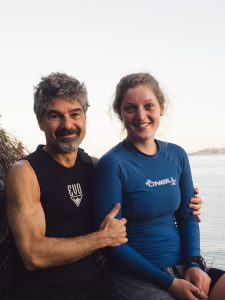 Although most of the volunteers who choose to join MRCI during their gap year are between the ages of 19 and 25, we usually have all ages on camp. Rarely do we get to share the experience with father and daughter though, and what a pleasure it was to share it with Tom and Grace Anastasio during their marine conservation volunteer program.
Although most of the volunteers who choose to join MRCI during their gap year are between the ages of 19 and 25, we usually have all ages on camp. Rarely do we get to share the experience with father and daughter though, and what a pleasure it was to share it with Tom and Grace Anastasio during their marine conservation volunteer program.
Grace looked forward to diving with her dad:
“Before I even arrived at camp it was obvious to me that Madagascar and MRCI would offer me an incredible adventure. Before hitting the ground I was already enamored with the country in which I would be lucky enough to spend one whole month.
From our connecting flight in South Africa, we boarded the smallest plane I had ever seen and buckled in for a flight that would eventually take us over the pristine waters of Madagascar. Tropical islands ranging from tiny and uninhabited to big(ish) and bustling, peppered the waters. I was sure we had found heaven.
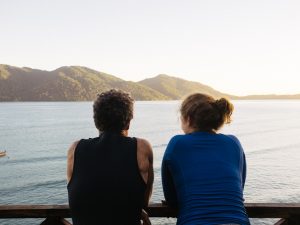 We touched down in Nosy Be, a Madagascan island close to Nosy Komba: the home of MRCI. I was overwhelmed with excitement when we met two friendly members of the MRCI staff, and my excitement only grew as we piled into cars with some other volunteers and cruised through the jungle to get to the port
We touched down in Nosy Be, a Madagascan island close to Nosy Komba: the home of MRCI. I was overwhelmed with excitement when we met two friendly members of the MRCI staff, and my excitement only grew as we piled into cars with some other volunteers and cruised through the jungle to get to the port
Finally, we boarded small, motorized boats to go from Nosy Be to Nosy Komba. Sitting practically on top of the other volunteers we had just met, we made way across the ocean to the nearby island. I couldn’t believe my eyes. The waters around Nosy Komba are a crystalline turquoise. On either side of you, islands jut up out of the water, their steep slopes reaching dramatically into the clear, blue sky. Locals peacefully floated by while fishing from their perogues – small, wooden dug-out canoes. They waved to us as we passed, greeting us with a friendly “m’bola tsara” – a greeting we would get used to saying tons of times every day. Realizing I got to spend an entire month in this paradise had me thrilled, but I was nervous about one thing.
I had decided to volunteer for MRCI on the marine project almost an entire year ago. Then my dad decided to join me. I was extremely excited that he was coming with me. I love my dad, and I hardly ever get to see him. I knew diving together and learning about the oceans – passions we both share – would be the best thing we had ever done together. Being in such a gorgeous part of the world would only add to the experience, but I was nervous about how the other volunteers, who were mostly close to my age (19-25) would react to my dad. I thought they might find it strange that we had come together. I was afraid he might not feel included or that the age gap would cause people to snub him.
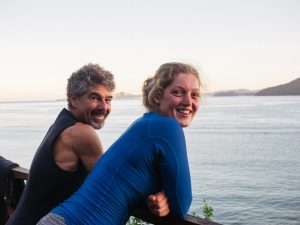 I’ve hardly been more wrong about something in my entire life. From the second we stepped on camp I knew having my dad around was not going to be a problem – in fact it has greatly enhanced not only my experience, but also the experiences of everyone here. Of course this is largely due to the fact that my dad is an amazing person – smart, athletic, laid back, and personable – but I think it has even more to do with the kind of people that the volunteers are.
I’ve hardly been more wrong about something in my entire life. From the second we stepped on camp I knew having my dad around was not going to be a problem – in fact it has greatly enhanced not only my experience, but also the experiences of everyone here. Of course this is largely due to the fact that my dad is an amazing person – smart, athletic, laid back, and personable – but I think it has even more to do with the kind of people that the volunteers are.
I’ve learned that you should never worry about the character of people who choose to spend their time and money in a remote location, with only the most basic comforts, working for a cause bigger than themselves. The other volunteers and staff members I have met at MRCI are open-minded, worldly, inclusive, and so curious and excited to learn. None of them saw the age of my dad as anything but just another number. In fact he quickly made a name for himself as one of the most pleasant and interesting people on camp. His years of experience only made his stories more enthralling. I always found him having the most intriguing discussions with people, which only allowed me to quickly make more friends. Now that we’ve all gotten to know each other better we tease one another about how my dad, who is close to 60 years old, is the most in shape and active volunteer. He puts us all to shame.
 While I was completely wrong to worry about how people might judge our little family trip, I was right that our time on Nosy Komba would bring my dad and I even closer together. We go on dives to two of four reefs in the area every single day; we walk to the nearby village at least three times a week and eat street food while greeting all the smiling faces of locals we have come to recognize; we visit other islands on the weekends, swim in waterfalls with area kids, drill each other on the names of fish species on the reefs until our heads explode, go for daily swims for exercise, and so much more.
While I was completely wrong to worry about how people might judge our little family trip, I was right that our time on Nosy Komba would bring my dad and I even closer together. We go on dives to two of four reefs in the area every single day; we walk to the nearby village at least three times a week and eat street food while greeting all the smiling faces of locals we have come to recognize; we visit other islands on the weekends, swim in waterfalls with area kids, drill each other on the names of fish species on the reefs until our heads explode, go for daily swims for exercise, and so much more.
Marine volunteering is amazing. Madagascar is amazing. My dad is amazing. But these three factors coming together at once have allowed me to appreciate each of them more than I ever could otherwise. I can’t wait for my next opportunity to do marine volunteering; I’m pledging to return to Madagascar one day; and seeing how much people respect my dad has only made me respect him more. I would highly recommend this program to families and I can’t wait to travel more with my dad in the future”.
Tom had one of the most fulfilling experiences of his life:
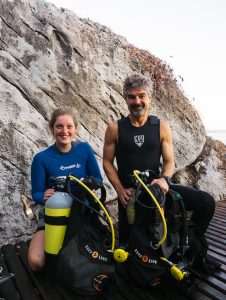 “Old guys like me don’t usually get to do cool stuff like this, but when my daughter, Grace, planned a month research experience in marine biology on a remote island in Madagascar, I just had to ask if I could come. To my surprise, she said yes! The remote island is called Nosy Komba, and it is the home of MRCI, a marine research and conservation institute.
“Old guys like me don’t usually get to do cool stuff like this, but when my daughter, Grace, planned a month research experience in marine biology on a remote island in Madagascar, I just had to ask if I could come. To my surprise, she said yes! The remote island is called Nosy Komba, and it is the home of MRCI, a marine research and conservation institute.
Except that she gives me way too much credit, I concur with Grace’s description of Nosy Komba and the excellent program here at MRCI. In addition to marine biology, they offer volunteer experiences in forest conservation, teaching, and construction – and the professional staff members take their missions seriously – they spend a lot of time training volunteers to ensure that make a valuable volunteer contribution. But it’s not all work and no play – there is plenty of time for fun, and volunteers go off on weekends to enjoy this naturally beautiful and culturally intriguing part of the world. We only spent one month. We could have spent a year and continued to grow personally the whole time.
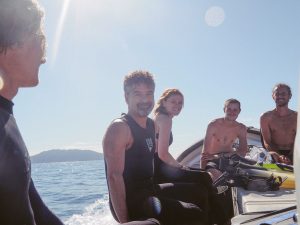 My reasons for coming were to have fun while giving back, but mainly to support Grace in her adventure. Due to the kindness of the staff and other volunteers in including me, it has been a wonderful adventure for me as well. It has been a time when my daughter and I could face new challenges together and strengthen our bond as we came to understand and appreciate each other better. It has been truly awesome for me to watch Grace improve as a SCUBA diver and develop her skills as a marine biologist – the staff well appreciates that she learned to identify fish a lot faster and more effectively than I did!
My reasons for coming were to have fun while giving back, but mainly to support Grace in her adventure. Due to the kindness of the staff and other volunteers in including me, it has been a wonderful adventure for me as well. It has been a time when my daughter and I could face new challenges together and strengthen our bond as we came to understand and appreciate each other better. It has been truly awesome for me to watch Grace improve as a SCUBA diver and develop her skills as a marine biologist – the staff well appreciates that she learned to identify fish a lot faster and more effectively than I did!
This experience has been among the most fulfilling experiences of my life, mostly because it has brought me so much closer to my daughter. Are you an old-ish guy (or gal) who dreams of doing some really cool stuff with your young-adult child (or children)? If so, then I cannot recommend this program more highly”.
If you wish to join one of our volunteer programs, fill out our online application form today.
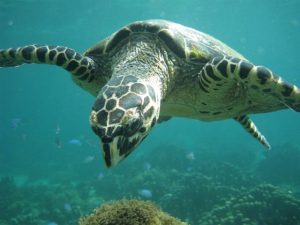 After more than two hours, exhausted, she finally managed to haul herself back around and down to the sea, leaving her nest and track behind her.
After more than two hours, exhausted, she finally managed to haul herself back around and down to the sea, leaving her nest and track behind her.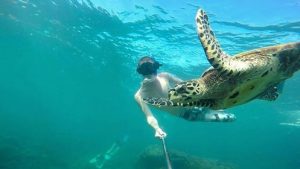 prevent attention being drawn to the nest) and have set up a regular patrol and day and night, monitoring of the beach for future nesting’s and any hatchlings!”
prevent attention being drawn to the nest) and have set up a regular patrol and day and night, monitoring of the beach for future nesting’s and any hatchlings!”


